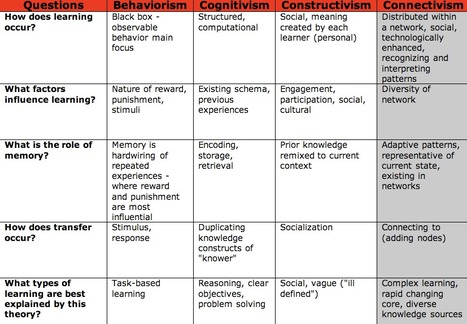Get Started for FREE
Sign up with Facebook Sign up with X
I don't have a Facebook or a X account

 Your new post is loading... Your new post is loading...
 Your new post is loading... Your new post is loading...
|

Rose Heaney's curator insight,
May 15, 2014 4:12 AM
Love the title. Check the article itself but also the commentary by curator with further links. 
Lia Goren's curator insight,
May 23, 2014 2:06 AM
Comparato lo que dice Keith Brennan " Al igual que muchos educadores, yo soy un pragmático. Coqueteo descaradamente con toda teoría que me atrae. Soy ideológicamente promiscuo. Voy con lo que funciona y soy implacable en eliminar a lo que no funciona. Hago esto porque no existe una teoría de " talla única ". Debido a que no existe una "talla única " de estudiantes. Esto es así, debido a que los estudiantes, los participantes y los aprendices son la métrica final que mide cualquier teoría y la experiencia es el campo de pruebas de las teorías. La fe en una teoría, la monogamia ideológica, se interpone en el camino de la evidencia." Recomiendo este post del portal Hybrid Pedagogy de Keith Brenann sobre las cosas que hay que considerar para proteger, asegurar y promover la motivación y la autoconfianza de los estudiantes en aulas y cursos. Vale para cualquier entorno de aprendizaje que se quiera considerar. |











